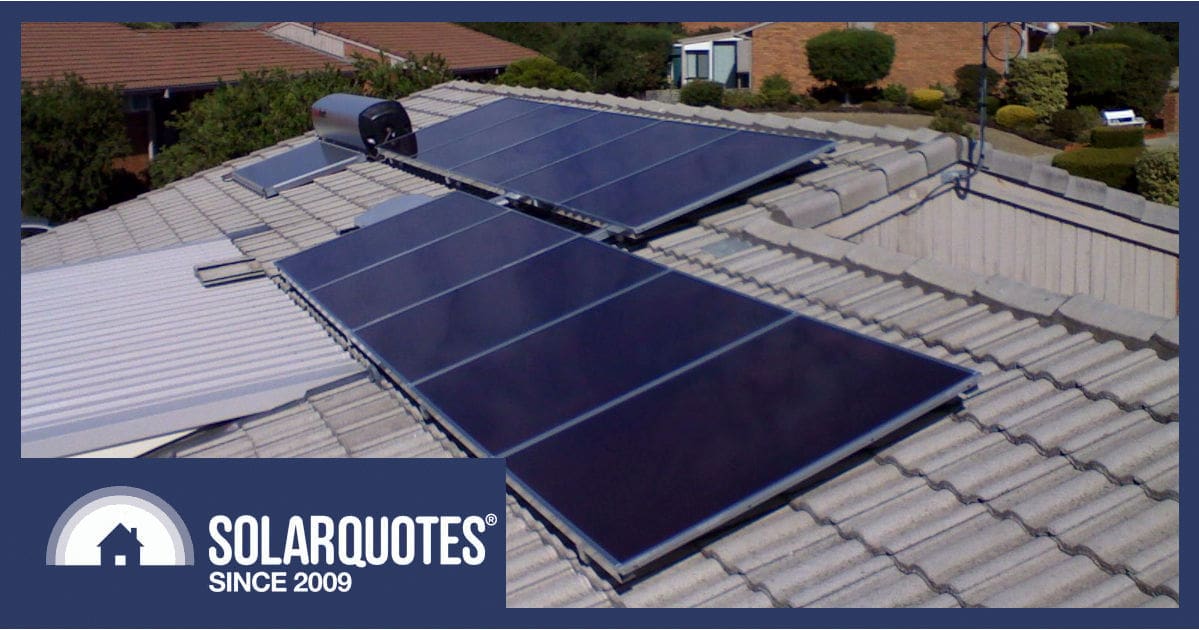
Since 2008 for this installation
Perhaps it’s a function of the ludicrous property market, but Australians all seem to obsess about return on investment these days. Some people say they’re too old to install solar power, but I’d like to explore why it’s always a good idea, no matter what stage of life you’re at.
One of the most gracious customers I ever came across was a Mr VanSelden. I don’t often remember names at the best of times, especially people I’ve only ever met once, but this bloke has stuck with me since 2008.
The reason was that at 80 years of age he openly stated the monetary return on this system didn’t matter as he wasn’t likely going to be around to see it pay itself off.
Still, he couldn’t imagine a better way to spend the money in his bank account.
Doing The Right Thing
Mr VanSelden simply thought it was a good outcome. It would save him money in the short term, it would add value to the retirement house he was installing it on. His children would see some return on the value of his estate and it would improve the environmental outcomes for his grandchildren.
At the time there was an $8000 federal government grant available, which meant he could leverage his money made on an otherwise very expensive investment.
The state government also offered a premium feed-in tariff, so the very small 1kW system would have an outsized impact on his bill and the financial return should fall inside the warranty.
The warranty didn’t matter much though; if the systems malfunctioned in 10 years, that would be a concern for others.
Taking The Long Term View
What both of these incentives did was establish a new industry, train a new workforce, write new standards and very visibly normalise a new way of generating power.
Though $12,000 per kilowatt was horrendously expensive compared to the technology available now, being an early adopter paid off in the long term.
The double whammy in this case is that $12,000 will now buy you ten times more solar, because the industry has now matured and competition is so fierce.
Being A Visionary Shouldn’t Be So Abnormal
Former Prime Minister John Howard was criminally backward in many instances. He spent ten times as much R&D money on the fraud of “clean coal” than he did renewables.
However we must acknowledge he did introduce the Solar Homes and Communities Program and the Renewable Energy Target.
Though the $4000 SHCP wasn’t enough to begin with, the government decided to inject more money and the nascent industry told them to double the eligibility from 1kW to 2kW, which would have bought everyone a bigger system and incentivised more private investment.
Instead, they just doubled the grant and by the time it was wound up we had seen the first round of cheap rubbish components sold as “free” solar power systems.
A Scheme With a Legacy
The RET was also ineffectual, but it at least offered a mechanism that Howard’s successors would ramp up into a useful tool. Despite wanton vandalism during the Abbott years, it’s a scheme that is still at work today, though it will be outlived by the recklessly stupid LNG contracts Howard signed.
Though STC incentives fall 7% each year, so does the price of panels. Roughly speaking, the top 200 polluters in the country subsidise your solar power system to the tune of 30%. Effectively the glass on your roof is still free.1
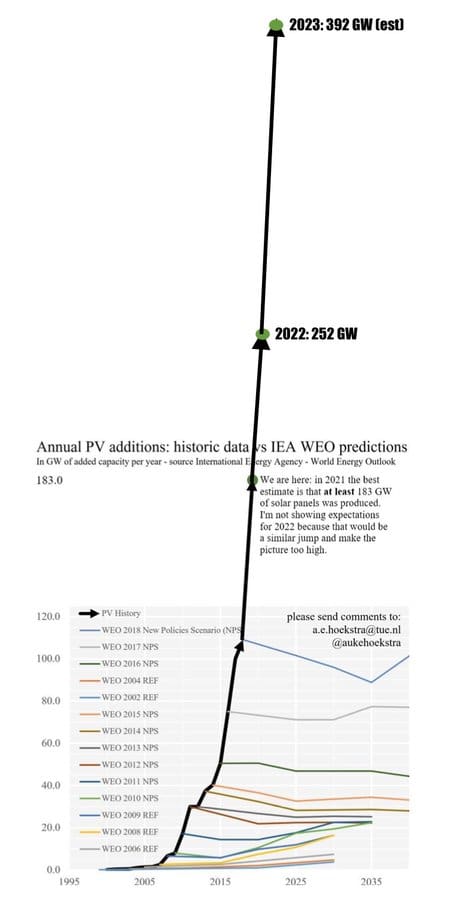
It’s insane how the “experts” repeatedly couldn’t envision how successful free fuel would be. Blind freddy can see solar has got some legs on it now.
Before Heat Pumps Had Been Heard Of
Mr VanSelden was also forward-thinking with his water heating. The now sadly defunct Solar Depot was a holistic solar company that used to offer remote area power systems alongside complete packages including hot water and space heating.
As dealers for Solahart, they installed a lot of close-coupled solar hot water services. You’ve seen them; two panels on the roof and a shiny silver tank laid horizontally across the top.
In this instance we craned up a smaller version, around 200 litres and one flat plate solar collector.
They’re a genuinely good solution, though they never saw fit to use an evacuated glass tube collector.
If you have one already then replace it with the same. Sadly, the flat plate collectors are now imported but nothing else has changed in the last 30 odd years.
1kW Was King
The solar power for this house was an equally modest setup. An SMA Sunny Boy 1100 watt inverter with ten Mitsubishi Thin Film solar panels.
Looking at the images of this install I realise this was so long ago. We spent many years using a bespoke framing system but simple square tubes and angles are long gone.
There was a time when both the margin in solar was so good, and the parts availability was so bad, that we would make tile interface brackets at home in the shed. I got that process down to 58 seconds each.
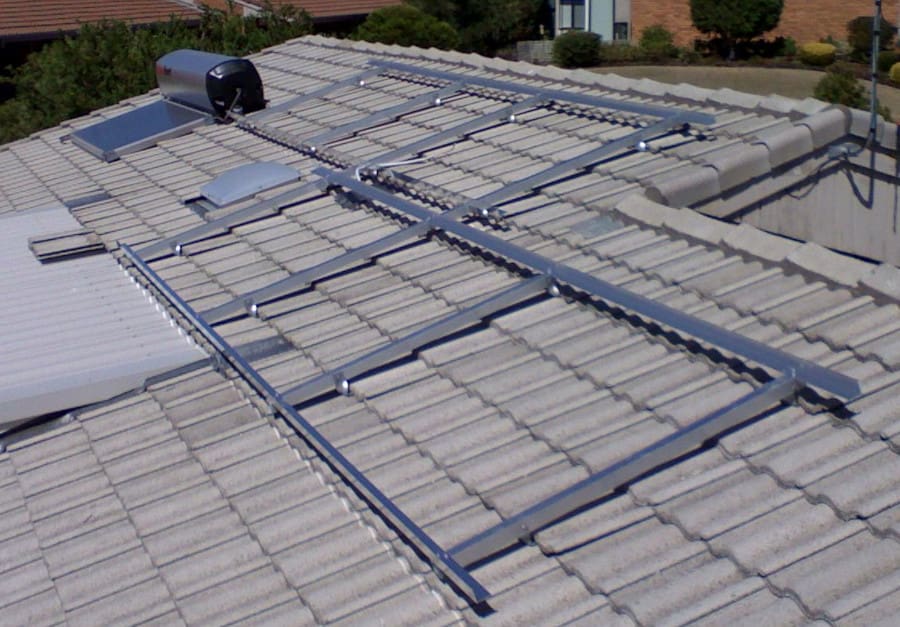
Framing cut to size from 6mt. lengths of aluminium, held together with stainless tek screws. Hand made tile brackets and no rooftop isolators!
Yield Is More Than Dollars
A 1kW system in Adelaide should make around 4.4kWh/day, so 17 years on this system would have made 27,000kW. Valued at 44 cents, that’s $11,880, or around 3 times the out-of-pocket expense.
Of course not every one of these kilowatt hours was that expensive. Offsetting consumption at 20c/kWh reduced the financial return, so we used to tell people to “export during the day and buy power back in at night for half price.” This customer training was the only perverse outcome of early solar power.
In any case this power represents coal unburnt and pollution abated.
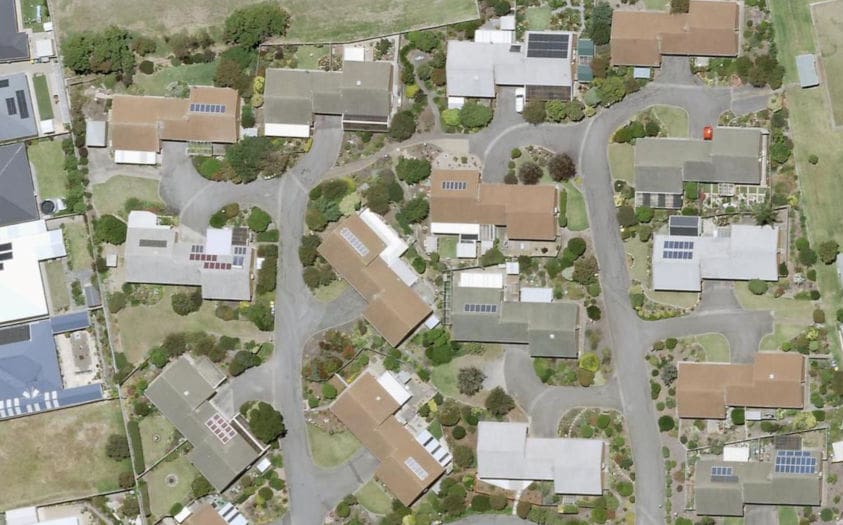
You can date a solar installation roughly just by counting the modules. 6 panels in 2008 cost the same as 28 panels today, with 2.5 times more rated power.
Returns Are More Than Investment
While people might consider depreciation when they consider buying a new car, they seldom ever run a cost-benefit analysis on buying a couch or owning a dog.
While solar power is bolted to your roof — themselves now sadly seen as investment vehicles more than they are valued for the utility and security of keeping the occupants dry — not everything comes down to bean counting.
I’ll argue the best thing about solar is that it empowers people. It gives them tools and more importantly it evaporates the helpless malaise of energy consumption.
Rather than just flicking the switch and accepting there’s no alternative to being stiffed by the energy industry, people now have their own power. Self-interest is enough interest to make consumers think about how they can get one back and reduce their bill.
The knock on is they have incentive to minimise their impact on the environment.
A Win For Everyone
Buying a solar system in your later years may run a risk of not paying off in a strict financial sense, so do the sums yourself with our solar calculator to estimate payback time.
I had a look on Google Maps the other day and saw that the solar array on Mr VanSelden’s roof remains in place right where I installed it. There’s more panels on the roof beside them now, but it’s reassuring that the work has proven durable.
We all owe these early adopters a debt of gratitude. While the energy yield may be small, what’s more important is their willingness to invest drove prices down for all who followed.
I don’t know whether Mr VanSelden has moved on or passed on — but I do know that his legacy is still with us.
Footnotes
- Just don’t tell the troglodytes that STCs are a carbon tax ↩

 RSS - Posts
RSS - Posts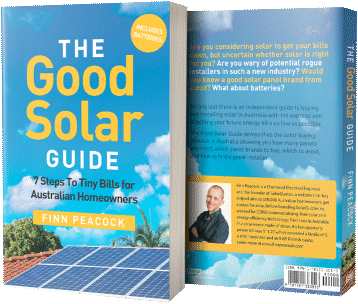


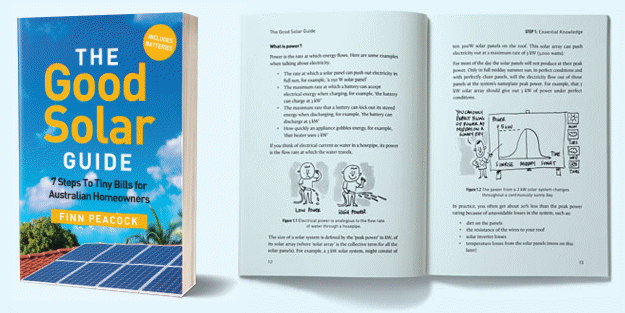
“It would save him money in the short term, it would add value to the retirement house he was installing it on. ”
That’s how we looked at it about 14 months ago, but it’s saving us an absolute heap of usage / $, much more than we expected or was predicted, probably due in part to a few tweaks done with retailer plans, existing appliances, metering, and usage habits since install.
If we got a battery, we’d be building some pretty good credits, removing the little peak charges we pay now, but some more analysis and sums required to see if it’s really needed / viable $ wise.
We might just do it anyway 🙂
The property value thing is grossly underestimated at time of sale.
I see properties with obvious great systems installed, and most times you don’t see any details of the system in advertising, and what it can do for the occupiers power savings.
Most times if anything is mentioned in the sales info, it’s simply ‘Solar system.’ and that’s it.
So Mr VanSelden or the owners since have kept up with efficient solar by the sounds of things, I wonder if the original (probably now) inefficient system is grandfathered on good tariffs still, and working well enough to keep it worthwhile ?
I built my house 20+yrs ago. We put a SolarEdwards 300L HWS on the roof.
Some years later we had a hailstorm that damaged the roof. Settled with Insurance, & when it came to roof under the 300L tank (stainless, that is NLA) we drained flushed the tank, then lifted it out of the way sideways, replaced the iron, then refitted the tank. The collectors were U/S, so I bought 3 used ones that were in good condition. System still working & our 7 person household still mainly runs on Solar HW, not electricity.
btw, the reason Stainless HW tanks fail is due to metal fatigue. My system runs from a Header tank, requiring no backflow valve (due to the isolation from the header tank), so the tank pressure remains constant. To get reasonable pressure you require a 4M head (ie 4M fall from the header tank to the highest shower!)
If I was building now I would either oversize the PV & run multiple storage HW tanks, so the pipe runs were short, or alternatively use a Heat Pump HWS, & suffer the extra waste of water. You could even centralise the HP HWS, then hot water feed small storage tanks topped up off the Solar PV to reduce the water losses to have the best of both worlds. Hot water runs should be max of 10M for efficiency.
My old Solar PV was also written off in the Hailstorm. The panels suffered Microcracks. Replaced the 5Kw system with 15Kw. Well worth the upgrade.
When installed, 54 of 250W panels! How times have changed.
Return on investment? years?
I considered my solar panels and battery paid off in full when i saw my first glorious power bill where I paid nothing to the scum sucking pigs of a power company, except the connection fee! Nothing will ever beat that feeling!
Yes Andrew, a lot of people go solar to ‘spite’ the retailers / power industry in Oz, especially with the last couple of years price rises.
“I’ll show them !!”.
Some really muck it up, working families / households that can’t self consume much during solar soak, and are likely ‘upgraded’ to smart meters, and being unaware of they are moved onto TOU tariffs.
They are generally the ones paying much more after solar, replying to social media solar industry adverts that “solar is a scam !”.
With FITs disappearing altogether soon, ‘sun tax’ started or starting this July in NEW states that will eat into diminishing FITs, and power cost only going up due to the ‘rush’, many solar homes are going to need to get a battery to keep the balance, and many systems will be incompatible, or just too inefficient to make that jump, without an entire new system.
I totally agree with you Andrew, especially in that recent hot weather in Adelaide.
Crank up the air conditioning and during the day, it cost nothing to run.
Absolutely!
We are limited to a 5kw feed in here in Qld, so once my battery is charged i can run both my big air conditioners and still put the maximum 5 kw into the grid.
Not that it is really worth selling them any power at 4c a kw, although i usually get enough each day to pay about 2/3 of the connection fee. Better than a poke in the eye with a sharp stick i suppose!
How about this for an idea. Drop the political jibes and think like an engineer.
Figure out what is needed to power the nation including heavy industry through a week of windless nights and build that.
Hi Ross,
We’re already doing it, just need to make sure there’s no Tony Abbott type vandalism where his policy uncertainty saw investment drop 88% in one year.
Have a read here
The wind wont all stop blowing at once across the country, just as the entire country wont suffer from cloud cover all at the same time.
But storage is the answer to your question.
Currently we have about 15gw of storage, with another 26gw on the planning board.
Currently there is still about 40gw of polluting power generation capacity left in our system. That is less than double the current planned storage under way. So we are well on the way to replacing it.
But getting it built in a timely manner (without a change in policy once again scaring of potential investors) is important, as we are about to start losing old coal fired powered stations at a rapid rate over the next decade.
Spot on Andrew,
Bidirectional EV charging is going to help here too, it’ll be fast to deploy once we have the products to market.
Andrew, you need to think of both kW and kWh.
I am on a state pension, which is reduced because I have money is the bank and superannuation. When I spend some of this money on solar panels and a heat pump my pension goes up. This means my payback period is much shorter, as an older person.
For example if I spent $5,000 on a solar system my pension would increase by around $1/week. Not a huge amount but together with the other savings it all adds up.
We are also home more during the peak solar production times than younger working couples.
That could be my 80+ yo Dad in this story – except that he was ripped off by a doorknocking solar shifty. Unless it’s a brand new property you need to do your roof maintenance FIRST. The inverter failed and, despite being replaced under warranty eventually with me doing too much work to find this out, long after it failed, the unpaid then 20 – 60c kw solar feed-in missed out for more than a year of overly sunny winter, was too late for the warranty to chase through NCAT. Yes the system works now, but the solar PV output of Dad’s panels severely degraded over the 5 years AND now pidgeons have nested beneath them. When you can’t see your roof of a 3 story house you don’t know these things until someone climbs up for another reason to tell you. In short, the only safe way to remove pidgeons and fire hazard nests, is to pull everything off & start again – $5K to put back old panels – ie a new install –
I had my 6 panel ($1200/ panel) system installed on my purpose built frame. I decided where the panels were going. I use the panels as a roof and the interesting thing is that they generate power in summer when the sun shines on the back of them. I found in 2009 it took many phone calls. A lot of pointless conversations with dictatorial “we know better” so called experts before I found my wonderful installers. They were respectful, helpful and were prepared to acknowledge that I might actually know something about solar. Who would have thunk?
I see people spending thousands of dollars on outdoor living rooms without ever asking about pay back times. Perhaps a new marketing ploy for solar would be the multiple use solar panel roof.
“Thinking of building a pergola, why not do it with solar?”
My neighbour is doing exactly that, a 6m x 6m or so outdoor sitting area over the top of his underground water tanks, with solar panels as the roofing.